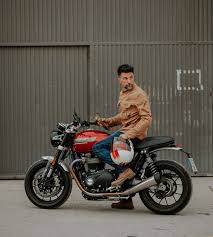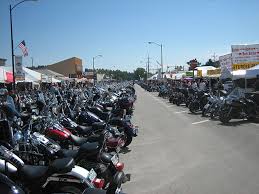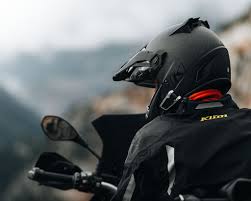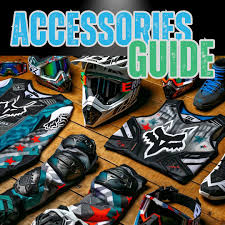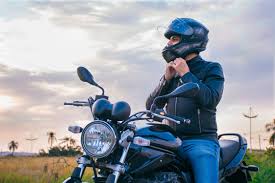Maximising Safety and Performance: The Essential Guide to Motocross Protective Clothing
The Importance of Motocross Protective Clothing
When it comes to participating in motocross, protective clothing is essential for ensuring both safety and performance on the track. The nature of motocross racing involves high speeds, challenging terrain, and potential risks, making it crucial for riders to invest in proper protective gear.
One of the most important pieces of motocross protective clothing is the helmet. A high-quality helmet can protect the rider’s head in case of a fall or collision, reducing the risk of serious head injuries. It is vital to choose a helmet that fits properly and meets safety standards to ensure maximum protection.
In addition to helmets, riders should also wear body armour to protect their chest, back, shoulders, elbows, and knees. Body armour helps absorb impact energy and reduce the risk of fractures or injuries during crashes. It is designed to be lightweight and flexible to allow for freedom of movement while still providing adequate protection.
Another essential piece of protective clothing for motocross riders is goggles. Goggles protect the eyes from dust, dirt, debris, and other hazards on the track. They also provide clear vision in various weather conditions, allowing riders to focus on their performance without distractions.
When selecting motocross protective clothing, it is important to choose items that are specifically designed for off-road riding. These garments are made from durable materials that can withstand the rigours of motocross racing while providing comfort and ventilation for extended periods of wear.
In conclusion, motocross protective clothing plays a crucial role in ensuring rider safety and performance on the track. By investing in high-quality helmets, body armour, goggles, and other protective gear designed for off-road riding, motocross enthusiasts can enjoy their sport with confidence and peace of mind.
Essential Benefits of Motocross Protective Clothing: Enhancing Safety and Performance
- Provides essential protection against impact injuries
- Helps reduce the severity of injuries during crashes
- Enhances rider safety on the track
- Offers peace of mind for riders during challenging rides
- Designed to be lightweight and comfortable for extended wear
- Protects vital body parts such as head, chest, back, and limbs
- Improves overall performance by boosting rider confidence
Challenges of Motocross Protective Gear: Cost, Comfort, and Fit Considerations
- Costly initial investment for high-quality protective gear
- Some protective clothing items may feel restrictive or bulky, affecting mobility
- Regular maintenance and replacement required to ensure continued effectiveness
- May cause discomfort or heat buildup during prolonged use in hot weather conditions
- Certain protective gear may not fit all body shapes and sizes adequately
Provides essential protection against impact injuries
Motocross protective clothing offers a crucial advantage by providing essential protection against impact injuries. In the high-speed and challenging terrain of motocross racing, riders are at risk of falls and collisions that can result in serious injuries. The protective gear, such as helmets, body armour, and knee braces, serves as a barrier against impact forces, absorbing energy and reducing the risk of fractures or other bodily harm. By wearing appropriate protective clothing, motocross enthusiasts can enjoy their sport with greater confidence and safety on the track.
Helps reduce the severity of injuries during crashes
Motocross protective clothing serves a vital role in minimising the severity of injuries sustained during crashes. By providing essential padding and impact absorption, protective gear such as helmets, body armour, and knee braces can significantly reduce the risk of fractures, cuts, and other serious injuries that riders may encounter on the track. This added layer of protection not only enhances safety but also instills confidence in riders, allowing them to push their limits while knowing they are safeguarded against potential harm.
Enhances rider safety on the track
Motocross protective clothing significantly enhances rider safety on the track by providing a crucial layer of protection against potential injuries. From helmets that safeguard the head in case of falls to body armour that absorbs impact energy during crashes, these gear items are designed to minimise risks and ensure riders can confidently navigate challenging terrains. By investing in high-quality protective clothing specifically tailored for motocross, riders can focus on their performance without compromising on safety, allowing them to push their limits with peace of mind.
Offers peace of mind for riders during challenging rides
Motocross protective clothing offers peace of mind for riders during challenging rides by providing a sense of security and confidence on the track. Knowing that they are equipped with high-quality gear designed to protect them in case of falls or collisions allows riders to focus on their performance without worrying about potential risks. This peace of mind enables riders to push their limits, tackle difficult terrain, and fully immerse themselves in the exhilarating experience of motocross racing, knowing that they are well-protected against any unforeseen circumstances.
Designed to be lightweight and comfortable for extended wear
Motocross protective clothing offers the advantage of being designed to be lightweight and comfortable for extended wear. This feature allows riders to move freely and comfortably on the track without feeling restricted or weighed down by their gear. The lightweight and comfortable design of motocross protective clothing also ensures that riders can focus on their performance without being distracted or uncomfortable during long rides or races. Ultimately, this pro enhances both safety and enjoyment for motocross enthusiasts, making it easier for them to stay protected while pushing their limits on the track.
Protects vital body parts such as head, chest, back, and limbs
Motocross protective clothing offers a crucial advantage by safeguarding vital body parts, including the head, chest, back, and limbs. This protective gear acts as a shield against potential impacts and injuries during the adrenaline-fueled action of motocross racing. By providing targeted protection to these key areas, riders can feel more confident and secure as they navigate challenging terrains and push the limits of their performance on the track. The comprehensive coverage offered by motocross protective clothing ensures that riders can focus on their skills and technique without compromising on safety.
Improves overall performance by boosting rider confidence
Motocross protective clothing not only enhances safety but also contributes to improved overall performance by boosting rider confidence. Knowing that they are well-protected in case of a fall or collision allows riders to push their limits and ride more aggressively, leading to better performance on the track. With the assurance that they are equipped with high-quality protective gear, riders can focus on their skills and technique without hesitation, ultimately enhancing their riding experience and achieving greater success in motocross racing.
Costly initial investment for high-quality protective gear
One significant downside of motocross protective clothing is the costly initial investment required for high-quality gear. Top-of-the-line helmets, body armour, goggles, and other protective equipment designed for motocross can be expensive, making it a financial challenge for riders, especially beginners or those on a tight budget. The cost of purchasing all the necessary protective gear upfront can deter some individuals from fully committing to the sport or upgrading their existing gear to ensure optimal safety and performance on the track. Despite the initial expense, investing in quality protective clothing is crucial for rider safety and well-being in the demanding and high-risk environment of motocross racing.
Some protective clothing items may feel restrictive or bulky, affecting mobility
Some riders may find that certain motocross protective clothing items, such as body armour or padded jackets, feel restrictive or bulky, which can impact their mobility on the track. The added layers of protection can sometimes limit the rider’s range of motion and make it challenging to maneuver the bike effectively. This restriction in movement may affect the rider’s performance and comfort during races or practice sessions. Finding a balance between adequate protection and freedom of movement is essential to ensure that riders can maintain agility and control while wearing protective gear in motocross events.
Regular maintenance and replacement required to ensure continued effectiveness
Regular maintenance and replacement of motocross protective clothing is a significant drawback that riders need to consider. Over time, the wear and tear from frequent use, exposure to the elements, and impacts during races can compromise the effectiveness of the gear. It is essential for riders to inspect their protective clothing regularly for any signs of damage or deterioration and replace any worn-out components promptly. Failure to maintain and replace protective gear as needed could result in reduced protection levels, potentially putting riders at risk of injury during motocross activities.
May cause discomfort or heat buildup during prolonged use in hot weather conditions
One potential drawback of motocross protective clothing is that it may lead to discomfort or heat buildup, especially when worn for extended periods in hot weather conditions. The added layers of protective gear can restrict airflow and trap heat close to the body, potentially causing riders to feel overheated and uncomfortable. This issue can impact a rider’s performance and overall experience on the track, highlighting the importance of selecting protective clothing that offers adequate ventilation and breathability to help mitigate heat-related issues during motocross activities.
Certain protective gear may not fit all body shapes and sizes adequately
One significant drawback of motocross protective clothing is that certain gear may not fit all body shapes and sizes adequately. This can lead to discomfort, restricted movement, and compromised protection for riders who do not have access to gear that fits them properly. Ill-fitting protective clothing may also increase the risk of injuries in the event of a crash or impact, as it may not provide the necessary coverage or support needed to stay safe on the track. Riders must carefully consider sizing and fit when selecting their protective gear to ensure optimal performance and safety while participating in motocross activities.

